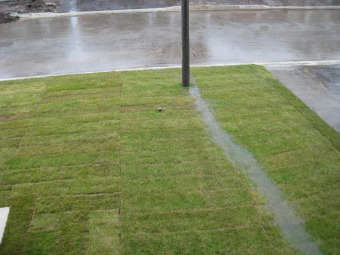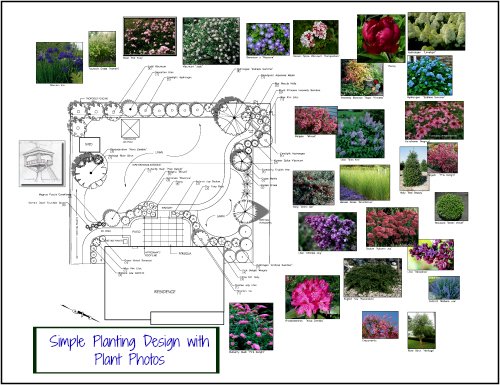Landscape Drainage | Lawn and Swale Grading
by Kellie
(Toronto, ON)

Poor Lawn Drainage
Here's a question about landscape drainage
Hi Susan,
I am very pleased to have found your landscape design and advice site. Your site is user friendly and extremely informative. Thank you for taking the time to address the various landscaping questions.
I would like your advice and suggestions for correcting my lawn drainage problem. Here is the issues:
I have what appears to be poor landscape drainage on my lawn. I have swales and caved slopes on my lawn which are more prominent on one side of the yard. When my neighbor waters his lawn or when it rains, I get a puddle of stagnant water sitting in the swales and caved slope areas.
I understand the swales and sloped grading prevents water from coming towards the house but it does not flow properly. I end up with stagnant water and puddles on the left corner side of my backyard. The swales/sloped grading continuesalong the side walk-way of the house (which is sodded but extremely soggy and muddy)onto the front lawn (picture of front lawn attached). Due to the puddles and stagnant water, the grass gets soggy and we get muddy spots in various areas of our lawn.
In your opinion, does it sound like the lawn and swale grading was completed/designed properly? Should excess water drain rapidly through the soil? What options would you recommend to fix these problems.
Thank you in advance for your advice. I appreciate any information you can provide.
Kellie
ANSWER
Hi Kellie,
There should always be the correct slope for landscape drainage in a yard and as you know this is accomplished by grading. There should be a 2% slope to drain water in a particular direction, whether it be away from the house or just to
prevent water from collecting in an area.
Also see following pages:
Lawn Drainage
Landscape Grading
A swale is created when there is not enough pitch. Grading of the swale and re-grading of the adjacent areas occurs. A swale can also be created to re-direct water away from a landscape feature, such as a swimming pool, patio (although the patio should be sloped too), etc.
As with general grading, a swale should be sloped at 2%. This means that although water pitches to the swale, the swale itself must be sloped too, other wise it will just sit there.
This might be your problem. Actually, 2% is the same as 1/4 inch per foot. The point in the swale one foot along from where the swale begins should be 1/4 Inch lower than the
You can check this yourself if you are adventurous. Buy something called an eye level. You can get one online. Stand at the beginning of the swale (right in the ditch), select a convenient focal point, like your house, and look at it through the eye level. Since it's a level, you want the bubble to be in the middle. Move it slightly so that it is. This will line up with a spot on your house. Mark it with a colored sticky or something similar.
Now go to the bottom of the swale and do the same thing right in the area of the first mark, beneath it. (It will most likely be lower.) Mark that spot.
Now measure the distance between the two marks. You will then divide this number by the length of the swale which you will have to measure. But you must convert the measurement on the house into feet. If the distance measures 6", that would be .5 inches. If the swale is 20 feet long, you would divide .5 by 20. The answer is .025 which equals 2.5%, an acceptable slope. Anything over 2% is fine.
Your drainage problem could very well be an incorrect slope within the drainage system for your lawn and also the swale. Either you or someone else will have to determine this by gathering the elevations necessary, similar to what
I described above.
As far as soil issues go, sometimes lawns can struggle if there is clay soil without any other soil types. However, I don't believe I've seen drainage problems caused by this.
I'd just like to mention one more thing. Upon looking at the photo you sent, I see that your lawn is browning out in sections. How old is the sod? If it is very new, that could be the problem, rather than all of the grading discussed above. This can happen if a sodded lawn gets too much water or not enough water when it is first installed. In addition, the grass roots have not had a chance to develop and thus are not absorbing water as they would later on. In this case adjust the watering as necessary.
I believe I have covered most of what your landscape drainage problems (and lawn and swale grading) could be, albeit in a rather complicated way! If you have more questions or comments, just let me know.
Susan
If you enjoyed this page, please share it!
